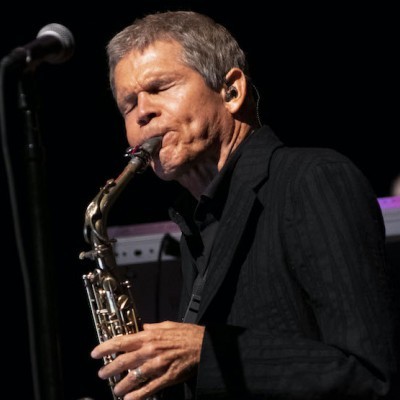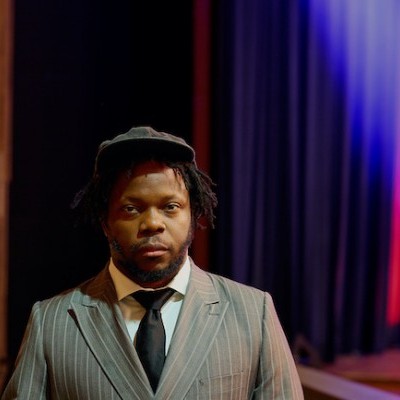Apr 2, 2024 12:59 PM
Saxophonist, Sonic Explorer Casey Benjamin Dies at 45
Casey Benjamin, the alto saxophonist, vocalist, keyboardist and producer who stamped his distinctive sounds on the…

Sanborn’s highly stylized playing and searing signature sound — frequently ornamented with thrill-inducing split-tones and bluesy bent notes — influenced generations of jazz and blues saxophonists.
(Photo: C. Andrew Hovan)David Sanborn, the star alto saxophonist who masterfully straddled the realms of straightahead jazz, R&B, rock and commercial pop, died May 12 in Tarrytown, New York, after a long battle with prostate cancer. He was 78.
Sanborn’s highly stylized playing and searing signature sound — frequently ornamented with thrill-inducing split-tones and bluesy bent notes — influenced generations of saxophonists who revered his ability to flat-out wail and seduce listeners within just about any musical context. In addition to releasing 25 albums as a leader or co-leader, Sanborn worked with some of the biggest names in music in the studio and on the road, including Miles Davis, James Brown and Stevie Wonder. Known for his prolific recorded output and energetic live shows, he won six Grammys and remained highly active until his passing.
Raised in the St. Louis suburb of Kirkwood, Mo., Sanborn contracted polio at age 3 and was introduced to the saxophone as part of his treatment therapy. After studying music at Northwestern University and with saxophonist J.R. Monterose at the University of Iowa, he went on to back legends like Albert King and Little Milton, then joined the Paul Butterfield Blues Band in 1967. His 1975 solo release Taking Off further solidified his career. Also in 1975, Sanborn was showcased on David Bowie’s hit album Young Americans, which prominently featured the saxophonist in a soloing role, notably on the album’s title track. That was followed by the Brecker Brothers’ self-titled debut, which featured Sanborn’s alto alongside Michael’s tenor and Randy’s trumpet.
Other notable recordings from this fertile period featuring Sanborn included the Bob James collaboration Heads, Jaco Pastorius’ “Come On, Come Over,” Mose Allison’s Your Mind Is On Vacation, George Benson’s Good King Bad, Paul Simon’s Still Crazy After All These Years, Bruce Springsteen’s Born To Run, the Eagles’ One Of These Nights, The Manhattan Transfer’s self-titled debut, Gil Evans’ Priestess and James Taylor’s radio hit “How Sweet It Is (To Be Loved By You).” The tune “Seduction,” from Sanborn’s 1979 album Hideaway, became a hit after being featured in the movie American Gigolo. Later albums as a leader included guest artists and collaborators such as Luther Vandross, Jack DeJohnette, Bill Frisell, Charlie Haden, Tim Berne, Wallace Roney, Kenny Barron, Christian McBride and Eric Clapton, among others.
A onetime member of the Saturday Night Live Band and a familiar presence on the set of Late Night with David Letterman, Sanborn further raised his profile via frequent appearances on television and radio. From 1988 to 1990, he hosted the TV show Night Music, with Sanborn providing informative introductions for an eclectic mix of guests and sitting in with their bands. During the 1980s, he also began hosting the syndicated radio program The Jazz Show With David Sanborn.
Sanborn was generous with his television and radio guests, which he attributed to the sense of gratitude he felt toward his musical predecessors. In an October 1994 conversation with the iconic soul-jazz alto saxophonist Hank Crawford moderated by DownBeat, Sanborn explained, “For me, it’s payback. Because by acknowledging what has come before you and what’s happening around you, you feed your own soul. You’re always going to find out something different. When Hank was on the show, just being with him in that context, I learned so much from just standing next to him playing, which I had never done before.”
Sanborn is survived by his wife, the pianist, vocalist and composer Alice Soyer Sanborn; his son, Jonathan; two granddaughters; and his sisters, Sallie and Barb Sanborn.
Earlier this year, he become the first recipient of the St. Louis-based Steward Center Lifetime Achievement Award in Excellence.
To read DownBeat critic Bill Milkowski’s first interview with Sanborn for the magazine’s August 1988 cover story, CLICK HERE. DB

Benjamin possessed a fluid, round sound on the alto saxophone, and he was often most recognizable by the layers of electronic effects that he put onto the instrument.
Apr 2, 2024 12:59 PM
Casey Benjamin, the alto saxophonist, vocalist, keyboardist and producer who stamped his distinctive sounds on the…

Albert “Tootie” Heath (1935–2024) followed in the tradition of drummer Kenny Clarke, his idol.
Apr 5, 2024 10:28 AM
Albert “Tootie” Heath, a drummer of impeccable taste and time who was the youngest of three jazz-legend brothers…

Sanborn’s highly stylized playing and searing signature sound — frequently ornamented with thrill-inducing split-tones and bluesy bent notes — influenced generations of jazz and blues saxophonists.
May 14, 2024 3:13 PM
David Sanborn, the star alto saxophonist who masterfully straddled the realms of straightahead jazz, R&B, rock and…

Henry Threadgill performs with Zooid at Big Ears in Knoxville, Tennessee.
Apr 9, 2024 11:30 AM
Big Ears, the annual four-day music celebration that first took place in 2009 in Knoxville, Tennessee, could well be…

“I’m also at a point in my life where I don’t feel like I have anything to prove, like at all,” Akinmusire says about his art.
Mar 26, 2024 12:45 PM
At the risk of oversimplifying and romanticizing the story, Ambrose Akinmusire came bursting on the jazz scene at the…